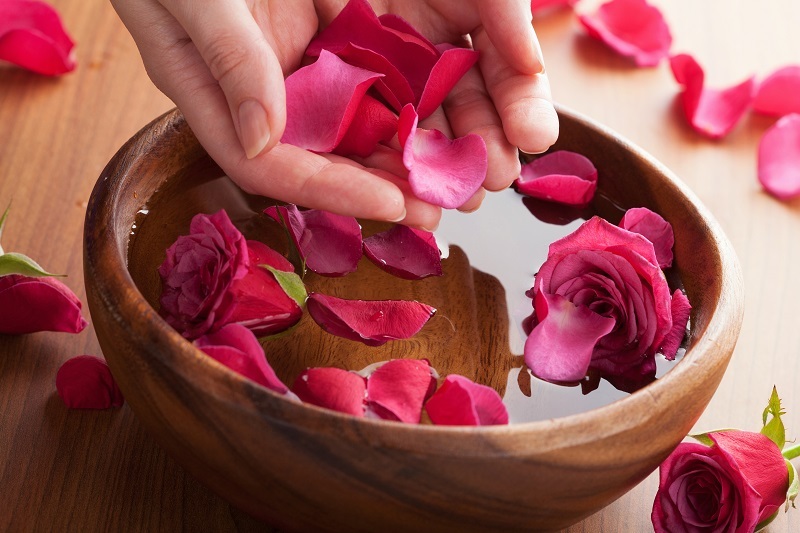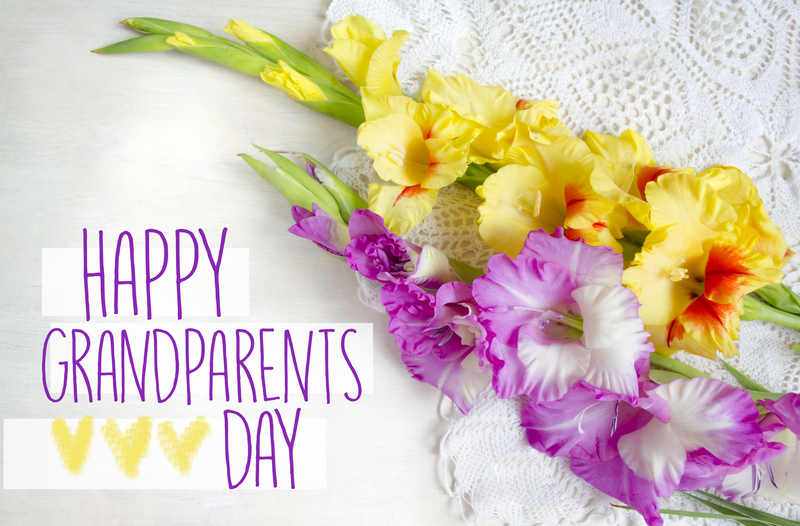Decode the Significance of Your Unique Birth Flower
Posted on 30/08/2025
Decode the Significance of Your Unique Birth Flower
Have you ever wondered about the symbolism behind your birth month's flower? Much like birthstones, birth flowers carry profound meanings and hidden messages. They connect us with nature, history, and cultural lore. By unraveling the significance of your unique birth flower, you gain insight into your character and the sentiments these stunning blooms represent.
Understanding the Concept of Birth Flowers
Flowers have been cherished through the ages, not just for their beauty, but for their special meanings. The tradition of associating specific flowers with birth months dates back centuries, with roots in both Western and Eastern cultures.
- Victorian floriography: In the 19th century, Victorians used flowers to express emotions that couldn't be spoken aloud, making the birth flower a messenger for secret feelings.
- Myth and folklore: Each unique birth flower is laced with stories, myths, or medicinal properties tied to the time it blooms and its meaning.
- Personal identity: People identify closely with their personal birth flower, making it as significant as their zodiac sign or birthstone.

How Birth Flowers Are Selected
The choice of birth flowers by month usually relates to the plant's natural blooming season and its popularity throughout history. Two flowers are typically linked to each month--one traditional and one alternative. These seasonal blossoms reflect attributes thought to represent those born in each period.
Why Your Birth Flower Matters
Just as every person possesses a unique personality, every birth flower meaning carries its own symbolism:
- Insight into personality traits -- Your flower may highlight strengths, sensitivities, or artistic inclinations.
- Powerful personal talisman -- Birth flowers are often gifted to bring luck, love, and health to the recipient.
- Rich cultural significance -- Many flowers are used in rituals, celebrations, and literature, imparting their essence on those born in their month.
Now, let's decode the significance of your unique birth flower month by month. Discover the layers of meaning behind the bloom representing your birth month, its characteristics, and hidden wisdom it holds for you.
Monthly Breakdown: Birth Flowers, Meanings, and Symbolism
January: Carnation and Snowdrop
Carnation -- Often seen as a symbol of love, fascination, and distinction. January-born individuals are believed to carry qualities of warmth and resilience, just like carnations that bloom in the coldest of months.
- Symbolism: Admiration, gratitude, devotion
- Colors & Meanings: Pink carnations for affection, red for love, white for purity
- Alternative: Snowdrop-- Hope and rebirth, mirroring the slow return of light after winter's darkness
February: Violet and Primrose
Violet -- A sign of modesty, faithfulness, and virtue. If you were born in February, your personality might be marked by humility and quiet strength, akin to the gentle violet growing through winter's chill.
- Symbolism: Loyalty, spiritual wisdom
- Alternative: Primrose-- Means young love, perfect to represent February's romantic vibes
March: Daffodil and Jonquil
Daffodil -- Known for representing rebirth and new beginnings, daffodils are fitting for March, a month of renewal. Those born in March are often credited with charm and optimism, reminiscent of daffodils heralding spring.
- Symbolism: Hope, joy, inspiration
- Alternative: Jonquil-- Symbolizes sympathy and desire
April: Daisy and Sweet Pea
Daisy -- Associated with innocence, purity, and loyal love. People with April birthdays are thought to be pure-hearted and bring positivity to those around them.
- Symbolism: Childhood, new beginnings, happiness
- Alternative: Sweet Pea-- Gratitude, blissful pleasure
May: Lily of the Valley and Hawthorn
Lily of the Valley -- A sweetly scented flower embodying humility, happiness, and the return of joy. May-born individuals might bring comfort and kindness into the lives of others.
- Symbolism: Sweetness, motherhood, luck
- Alternative: Hawthorn-- Hope and supreme happiness
June: Rose and Honeysuckle
Rose -- Universally recognized as the flower of love and passion. June's roses symbolize romance, honor, and appreciation. Those born in June reflect this versatility and depth.
- Symbolism: Balance, affection, beauty
- Colors & Meanings: Red for love, yellow for friendship, white for purity
- Alternative: Honeysuckle-- Devotion and strong bonds of love
July: Larkspur and Water Lily
Larkspur -- Symbolizes lightness, positivity, and an open heart. July individuals might radiate cheerfulness and have an inviting charm, just like these colorful flowers.
- Symbolism: Dignity, enthusiasm, grace
- Colors & Meanings: Pink for fickleness, purple for first love, white for happiness
- Alternative: Water Lily-- Purity and majesty
August: Gladiolus and Poppy
Gladiolus -- The flower of strength, integrity, and infatuation. August-born individuals may have a natural charisma and determination, leading others with confidence.
- Symbolism: Victory, honor, remembrance
- Alternative: Poppy-- Peace and deep sleep, representing August's gentle warmth
September: Aster and Morning Glory
Aster -- Represents wisdom, faith, and valor. September-borns are often admired for their intelligence and steadfastness, qualities that mirror the enduring aster.
- Symbolism: Elegance, patience, daintiness
- Alternative: Morning Glory-- Affection and unrequited love
October: Marigold and Cosmos
Marigold -- Known for representing passion and creativity, marigolds signify warmth and positive energy. October individuals may bring vibrancy to their social circles.
- Symbolism: Courage, prosperity, protection
- Alternative: Cosmos-- Order, harmony, and peace
November: Chrysanthemum
Chrysanthemum -- Embodies friendship, abundance, and fidelity. If you're a November baby, your birth flower alludes to a generous and affectionate personality.
- Symbolism: Loyalty, joy, longevity
- Colors & Meanings: Red for love, white for truth, yellow for slighted love
December: Narcissus and Holly
Narcissus -- Symbolizes good wishes, hope, and rebirth, echoing the sentiments of the holiday season. December-borns may have an aura of optimism and purity.
- Symbolism: Respect, faithfulness, modesty
- Alternative: Holly-- Domestic happiness and protection
Personalizing Your Connection: How to Use Your Birth Flower
Now that you have decoded the significance of your unique birth flower, you can incorporate its meaning into your life in creative and meaningful ways:
- Gifts: Include your birth flower in bouquets or decorate gifts to add a thoughtful, symbolic touch.
- Jewelry: Wear pendants, bracelets, or rings featuring your birth flower for luck and personal empowerment.
- Home decor: Display artwork or motifs of your birth flower to invite its energy into your space.
- Gardening: Plant your birth flower in your garden to nurture a living connection with your birth month.
- Celebrations: Host birthday gatherings with decorations and themes centered around the birth flower of the honoree.
Birth Flowers Around the World: Cross-Cultural Variations
While the Western tradition of birth flowers is the most widely known, various cultures have their own versions and interpretations. In Japan, Hanakotoba is the language of flowers; each bloom carries a nuanced message. Similarly, in some Eastern cultures, the lunar calendar and specific festivities dictate floral symbolism. This diversity underlines how your unique birth flower holds even deeper layers of meaning.
Fun Facts and Myths About Birth Flowers
- Ancient messages: Greek and Roman myths often assign mystical traits to certain flowers, influencing modern birth flower meanings.
- Medicinal marvels: Many historic birth flowers doubled as healing herbs long before modern medicine.
- Floral responses: In Victorian times, the right flower sent unspoken signals in courtship and social affairs.
Choosing a Birth Flower as a Gift
Giving someone a bouquet based on their birth month is a powerful way to personalize your gift. When you take the time to discover the birth month flower meaning, you show genuine thoughtfulness and care. Consider pairing the flower with a hand-written note describing its symbolism--you'll create a memorable, heartfelt present.
Common Questions About Birth Flowers
Can I Have More Than One Birth Flower?
Yes! Some months, like April and July, have alternative birth flowers, allowing individuals to identify with the flower that best reflects their personality or preferences.
Are All Birth Flower Meanings Positive?
While most birth flower meanings are positive--love, friendship, protection--some, like the marigold (grief in some cultures), have layered interpretations. It's important to consider context and personal beliefs.
Is There a "Lucky" Flower for Each Month?
In tradition, birth flowers are seen as lucky for those born under their sign, bringing qualities such as health, happiness, and success throughout life.

Embracing the Power of Your Birth Flower
Your unique birth flower significance is more than tradition--it's a source of joy, expression, and self-knowledge. Whether you use it to center your personal style or deepen your understanding of yourself and loved ones, these blossoms offer a powerful, natural connection to your birthday and identity.
Try this: The next time you celebrate your birthday, adorn yourself or your space with your birth flower. Reflect on its meaning--it might inspire new ways to understand and nurture yourself throughout the year. By honoring your personal birth flower, you invite beauty, intention, and the wisdom of nature into every chapter of your life.
Conclusion: The Enduring Magic of Decoding Your Birth Flower
In a world full of symbols and stories, few are as personal and beautiful as your unique birth flower. By taking time to decode the significance of your birth flower, you add a meaningful tradition to your life's tapestry--one that intertwines history, nature, and your individual spirit.
Embrace the magic, honor the heritage, and let your birth flower bloom as a symbol of who you truly are.







